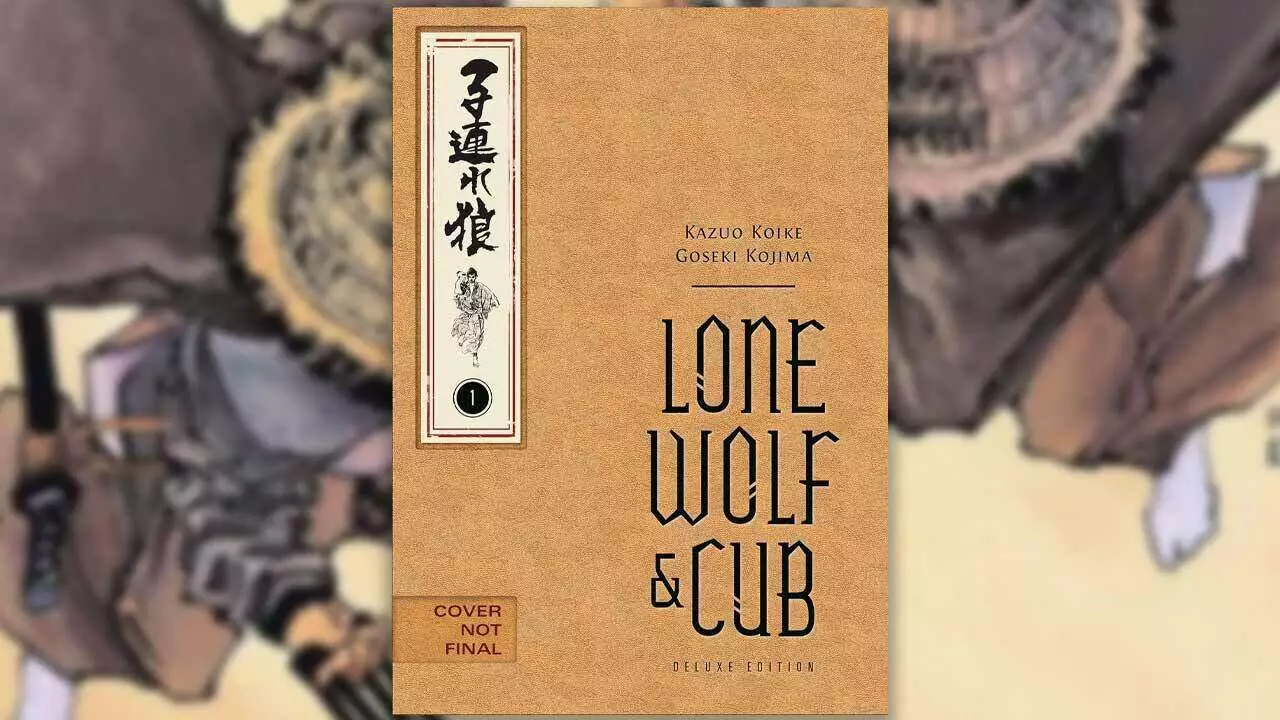“Lone Wolf and Cub” stands not just as a manga series but as a monumental milestone that reshaped the landscape of samurai storytelling. Crafted by the visionary duo of Kazuo Koike and Goseki Kojima, this epic transcends simple entertainment; it embodies a profound exploration of honor, vengeance, and paternal devotion. The recent reissue in deluxe hardcover editions consolidates its status as a must-have collector’s item, but beyond the lavish presentation lies a narrative that challenges our notions of heroism and heroics in the brutal, unforgiving world of feudal Japan.
The story centers around Ogami Itto, a disgraced former executioner of the shogunate, cast down by political intrigue and betrayal. His personal tragedy—murder of his wife—and the subsequent vow to avenge her spark a relentless quest that drags him into the depths of darkness. But what makes “Lone Wolf and Cub” exceptional isn’t just the revenge plot; it’s the juxtaposition of violence and tenderness. Itto’s fierce protectiveness for his young son, Daigoro, humanizes this hardened assassin and invites the reader to reevaluate what constitutes strength and vulnerability within the framework of ancient warrior culture.
This series is an unflinching look at the gray areas of morality, where justice and brutality are often intertwined. Kojima’s gritty artwork amplifies the violence and emotional stakes in equal measure, creating an immersive experience that’s both visually compelling and thematically profound.
The Significance of Reissues in a Modern Context
The decision by Dark Horse to re-release “Lone Wolf and Cub” in a luxurious 7″ x 10″ oversized hardcover format is an astute recognition of its enduring cultural significance. These new editions serve not merely as nostalgic artifacts but as a modern homage that invites new audiences to engage with the intricate details of Kojima’s artwork. The textured covers, foil-stamped lettering, and built-in ribbon bookmarks elevate the physical experience, making the series feel as monumental as the narrative it contains.
In today’s digital age, immersive print editions like these embody a counter-movement: a desire to connect physically with stories that have shaped manga history. The inclusion of multiple stories and stories spanning several volumes ensures that each page turns into an event, emphasizing the artistry and craftsmanship that Koike and Kojima employed. The deluxe editions are not just collectibles—they are curated experiences, designed to honor the legacy of a series that has influenced countless manga creators.
Furthermore, the price point reflects a recognition of its premium nature—viewing it as an investment in both art and storytelling. These editions are not just for collectors but for readers willing to immerse themselves in a masterful tapestry of violence, honor, and paternal vulnerability woven into every panel.
Legacy and Cultural Impact: Analyzing Its Enduring Influence
Few manga series have wielded such significant cultural influence as “Lone Wolf and Cub.” Its narrative archetype—a powerful man protecting a child on a perilous journey—has become a staple trope across media, inspiring countless works in film, television, and comics. Its influence extends beyond entertainment, shaping perceptions of masculinity, fatherhood, and morality.
The film adaptations, particularly during the early 1970s, attest to the series’ potent storytelling power. These gritty, stylized movies captured the essence of Kojima’s artwork and Koike’s complex characters, establishing a template for action movies that merge visceral violence with deep emotional resonance. The inclusion of these films in the Criterion Collection, with their remastered quality and bonus materials, underscores their importance as canonical works worthy of scholarly and fan appreciation.
However, while celebrating its influence, it’s vital to recognize that “Lone Wolf and Cub” is also a product of its time—its portrayal of violence and honor is unflinching and sometimes problematic by modern standards. Yet, it’s precisely this brutal honesty that cements its position as a trailblazer, challenging readers and viewers to confront uncomfortable truths about justice and morality.
The reissue of “Lone Wolf and Cub” is more than a collector’s item; it’s a reaffirmation of its place as a cultural touchstone. Its stories continue to echo across generations, reminding us that true heroism often resides in the delicate balance between strength and compassion—a lesson as relevant today as it was over 50 years ago.

